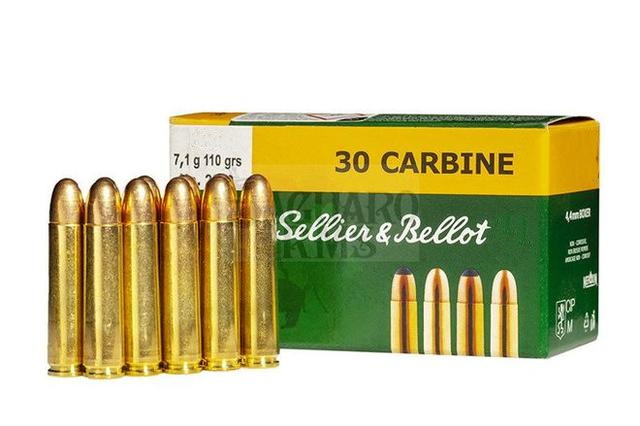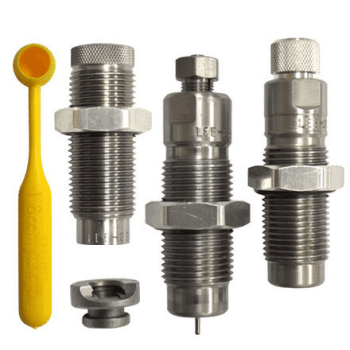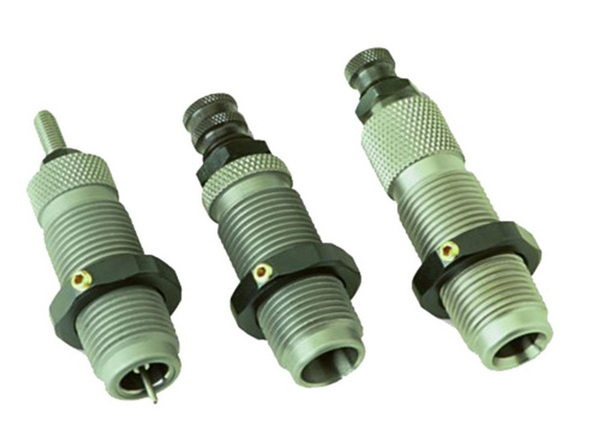Content Menu
● Introduction
● What Are Carbide Dies?
● Characteristics of the .30 Carbine
● The Best Carbide Dies for .30 Carbine
>> ZHONGBO CEMENTED CARBIDE Die Set
>> RCBS 30 Carbine Carbide Die Set
>> Dillon 30 M1 Carbine Carbide Die Set
● How to Choose the Right Die Set
● Steps for Reloading .30 Carbine Ammunition
>> Preparation
>> Step 1: Clean the Brass
>> Step 2: Resize the Cases
>> Step 3: Trim the Cases (if necessary)
>> Step 4: Prime the Cases
>> Step 5: Charge the Cases with Powder
>> Step 6: Seat the Bullets
>> Step 7: Crimp the Cases (if necessary)
>> Step 8: Inspect and Test
● Conclusion
● Frequently Asked Questions
>> Q1. What is the advantage of using carbide dies over steel dies?
>> Q2. Can I use carbide dies for other calibers?
>> Q3. How often should I clean my brass before reloading?
>> Q4. What is the best way to store reloaded ammunition?
>> Q5. Is reloading .30 Carbine ammunition cost-effective?
Introduction
The .30 Carbine cartridge has a rich history, originally developed for the M1 Carbine rifle during World War II. This versatile round has remained popular among shooting enthusiasts for its manageable recoil and effectiveness in various shooting applications, including target shooting and small game hunting. Reloading .30 Carbine ammunition can be a rewarding experience, allowing shooters to customize their loads for optimal performance. One of the key components in the reloading process is the use of carbide dies, which offer several advantages over traditional steel dies. In this article, we will explore the best carbide dies for reloading .30 Carbine ammunition, their benefits, and how to effectively use them.
What Are Carbide Dies?
Carbide dies are reloading tools made from a hard, durable material known as carbide. This material is significantly harder than steel, which allows carbide dies to withstand the wear and tear associated with the reloading process. The primary advantage of using carbide dies is their ability to resize brass cases without the need for lubrication, making the reloading process faster and cleaner. Additionally, carbide dies tend to last longer than their steel counterparts, providing excellent value for reloading enthusiasts.

Characteristics of the .30 Carbine
The .30 Carbine cartridge is known for its unique specifications. It features a bullet diameter of .308 inches and a case length of 1.290 inches. The cartridge is typically loaded with a variety of bullet weights, ranging from 110 to 130 grains, making it suitable for different shooting applications. The .30 Carbine is commonly used in semi-automatic rifles and carbines, providing a balance of power and controllability. Its relatively low recoil makes it an excellent choice for new shooters and those looking for a fun day at the range.
The Best Carbide Dies for .30 Carbine
When it comes to selecting the best carbide dies for reloading .30 Carbine ammunition, several options stand out in the market. Here are three of the top choices:
ZHONGBO CEMENTED CARBIDE Die Set
The Lee Precision 30 Carbine Die Set is a popular choice among reloaders for its affordability and reliability. This set typically includes a full-length sizing die, a bullet seating die, and a powder through expanding die. The carbide sizing die allows for easy resizing of brass cases without lubrication, while the bullet seating die ensures precise bullet placement. Many users appreciate the ease of use and consistent performance of this die set, making it an excellent option for both beginners and experienced reloaders.
RCBS 30 Carbine Carbide Die Set
Another highly regarded option is the RCBS 30 Carbine Carbide Die Set. Known for its durability and precision, this die set includes a full-length sizing die and a bullet seating die. The carbide sizing die provides smooth resizing of brass cases, while the bullet seating die allows for accurate bullet placement. RCBS is a trusted brand in the reloading community, and many users report excellent results with this die set. The quality construction and attention to detail make it a favorite among serious reloaders.
Dillon 30 M1 Carbine Carbide Die Set
For those looking for a premium option, the Dillon 30 M1 Carbine Carbide Die Set is worth considering. This die set is designed for high-volume reloaders and features a full-length sizing die, a bullet seating die, and a crimp die. The carbide sizing die allows for easy resizing without lubrication, while the crimp die ensures that bullets are securely seated in the case. Dillon is known for its high-quality reloading equipment, and this die set is no exception. Users appreciate the smooth operation and consistent results, making it a top choice for serious reloaders.
How to Choose the Right Die Set
When selecting the right carbide die set for reloading .30 Carbine ammunition, there are several factors to consider:
- Price: While it's essential to find a die set that fits your budget, remember that investing in quality tools can save you money in the long run. Cheaper dies may wear out quickly, leading to inconsistent results.
- Brand Reputation: Look for brands with a solid reputation in the reloading community. Established brands like Lee, RCBS, and Dillon are known for their quality and reliability.
- User Reviews: Reading user reviews can provide valuable insights into the performance and durability of a die set. Look for feedback from other reloaders who have used the dies you are considering.
- Ease of Use: Some die sets are designed with user-friendliness in mind, making them suitable for beginners. Consider how easy the dies are to set up and operate.
- Compatibility: Ensure that the die set you choose is compatible with your reloading press. Most carbide die sets are designed to work with standard reloading presses, but it's always good to double-check.

Steps for Reloading .30 Carbine Ammunition
Reloading .30 Carbine ammunition involves several steps, each crucial for ensuring safety and accuracy. Here's a step-by-step guide to help you through the process:
Preparation
Before you begin reloading, gather all the necessary tools and materials. You will need:
- Carbide die set
- Reloading press
- Brass cases
- Primers
- Powder
- Bullets
- Scale
- Calipers
- Case trimmer (if necessary)
Step 1: Clean the Brass
Start by cleaning your brass cases to remove any dirt or residue. You can use a tumbler with media or a sonic cleaner for this purpose. Clean brass ensures better performance and reduces the risk of chambering issues.
Step 2: Resize the Cases
Using the carbide sizing die, resize your brass cases. This step is crucial for ensuring that the cases fit properly in your firearm. Follow the instructions provided with your die set for proper setup and operation.
Step 3: Trim the Cases (if necessary)
If your brass cases are too long, you may need to trim them to the correct length. Use a case trimmer to achieve the desired length, ensuring that all cases are uniform.
Step 4: Prime the Cases
Insert new primers into the resized cases. You can use a hand primer or the priming feature of your reloading press. Ensure that the primers are seated correctly for reliable ignition.
Step 5: Charge the Cases with Powder
Using a scale, measure the appropriate amount of powder for your load. Carefully pour the powder into each primed case, ensuring consistency across all rounds. Double-check your measurements to avoid overcharging.
Step 6: Seat the Bullets
Using the bullet seating die, seat the bullets into the charged cases. Adjust the die to achieve the desired overall length for your ammunition. Consistent bullet seating is essential for accuracy.
Step 7: Crimp the Cases (if necessary)
If your load requires crimping, use a crimp die to secure the bullets in place. This step is particularly important for ammunition that will be used in semi-automatic firearms.
Step 8: Inspect and Test
After reloading, inspect each round for any defects. Look for proper primer seating, consistent powder charges, and secure bullet seating. Once satisfied, take your ammunition to the range for testing.
Conclusion
Reloading .30 Carbine ammunition can be a fulfilling hobby that allows shooters to customize their loads for optimal performance. Using carbide dies offers numerous advantages, including ease of use and durability. The Lee Precision, RCBS, and Dillon die sets are among the best options available, each providing unique features to suit different reloading needs. By following the steps outlined in this article, you can confidently reload your .30 Carbine ammunition and enjoy the benefits of this rewarding process.

Frequently Asked Questions
Q1. What is the advantage of using carbide dies over steel dies?
Carbide dies are harder and more durable than steel dies, allowing for resizing without lubrication. This results in a cleaner and faster reloading process.
Q2. Can I use carbide dies for other calibers?
Yes, carbide dies are available for various calibers, making them a versatile choice for many reloading enthusiasts.
Q3. How often should I clean my brass before reloading?
It's recommended to clean your brass every time you reload to ensure optimal performance and reduce the risk of chambering issues.
Q4. What is the best way to store reloaded ammunition?
Store reloaded ammunition in a cool, dry place, away from direct sunlight and moisture. Use labeled containers to keep track of different loads.
Q5. Is reloading .30 Carbine ammunition cost-effective?
Yes, reloading can be cost-effective, especially if you shoot frequently. It allows you to save money on ammunition while customizing loads to your preferences.
















